- News
- Reviews
- Bikes
- Components
- Bar tape & grips
- Bottom brackets
- Brake & gear cables
- Brake & STI levers
- Brake pads & spares
- Brakes
- Cassettes & freewheels
- Chains
- Chainsets & chainrings
- Derailleurs - front
- Derailleurs - rear
- Forks
- Gear levers & shifters
- Groupsets
- Handlebars & extensions
- Headsets
- Hubs
- Inner tubes
- Pedals
- Quick releases & skewers
- Saddles
- Seatposts
- Stems
- Wheels
- Tyres
- Tubeless valves
- Accessories
- Accessories - misc
- Computer mounts
- Bags
- Bar ends
- Bike bags & cases
- Bottle cages
- Bottles
- Cameras
- Car racks
- Child seats
- Computers
- Glasses
- GPS units
- Helmets
- Lights - front
- Lights - rear
- Lights - sets
- Locks
- Mirrors
- Mudguards
- Racks
- Pumps & CO2 inflators
- Puncture kits
- Reflectives
- Smart watches
- Stands and racks
- Trailers
- Clothing
- Health, fitness and nutrition
- Tools and workshop
- Miscellaneous
- Buyers Guides
- Features
- Forum
- Recommends
- Podcast
TECH NEWS
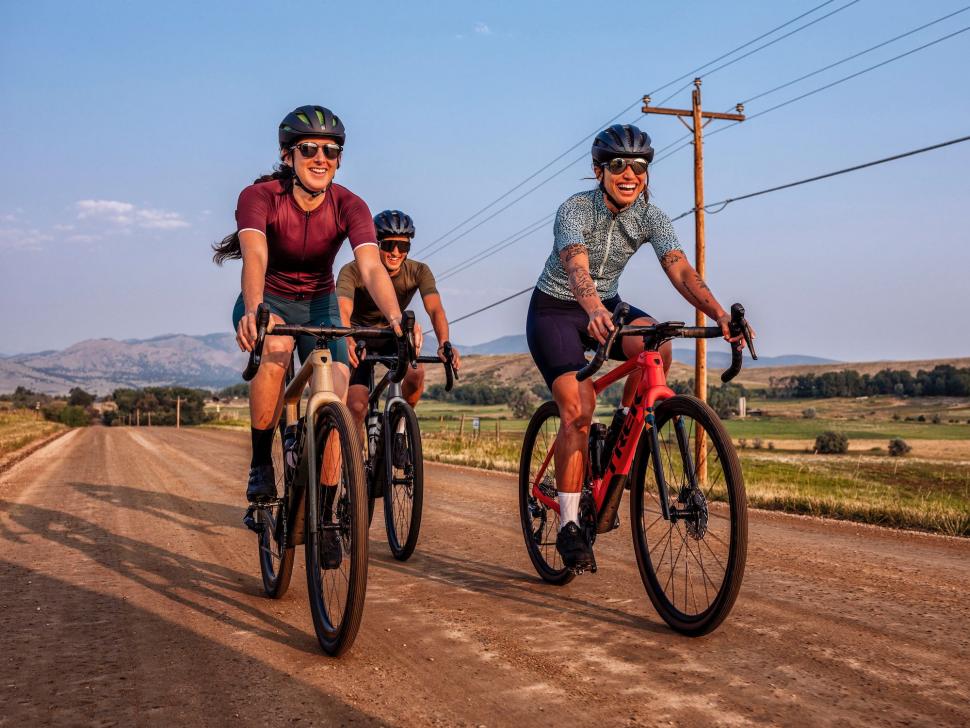 2022 Trek Checkpoint action - 3.jpeg
2022 Trek Checkpoint action - 3.jpegTrek overhauls Checkpoint gravel range with updated geometry & new top-level platform
Trek has given its Checkpoint gravel bike range a major update, introducing a ‘progressive’ geometry, including loads of mounts for those who want to carry cargo and increasing the number of frame platforms from two to three.
As previously, the Checkpoint comes in an ALR aluminium and SL carbon model levels, and there’s now an SLR carbon platform that sits at the top of the range. They all get a new geometry that Trek says is “quick and nimble yet keeps riders stable and in control on fast, choppy descents”, and they all have space for 45mm tyres.
“The SLR has a race focus, the SL is more focused on adventure, and the ALR is utility-focused,” said Jordan Roessingh, director of road bikes at Trek. “With the three platforms, you get this huge spread of different ways that people can experience gravel. Any kind of gravel riding, you can do on a Checkpoint.”
Geometry
The new geometry features a front centre – the distance from the centre of the bottom bracket to the front axle – that’s 2cm longer than previously, with a shorter stem and handlebar to compensate.
We’ve seen similar approaches on a lot of gravel bikes recently. Earlier this week, for example, BMC introduced a new URS LT gravel bike built to its Gravel+ geometry with a long top tube and short stem, designed to offer stability at high speeds and snappy steering.
“The new geometry is a really big departure from the geometry that we used on the previous Checkpoint,” says Jordan Roessingh. “To steal a mountain bike term, it’s a progressive geometry. We have significantly increased the front centre and reach of the bike which is a mountain bike trend.”
Travis Brown, lead project engineer for the Checkpoint platform, says, “We were pretty confident in the Midwest Great Plains-style gravel capability of the original Checkpoint. What we wanted to add was capability for mountain gravel experiences so we tested this out in Salt Lake City and rode some mountains out there. We had a group of test riders and we all found one geometry that we'd liked for multiple situations.
“Extending the wheelbase gives some stability and allows the rider to be behind the front wheel and be able to get their weight back to get over obstacles a little bit easier. That stability allows you to put the power down if you're in a race event or just on a straight, flat road as well.”
Jordan Roessingh says, “Making the front centre of the bikes 2cm longer is a huge change. While we wanted to make sure that the front wheel of the bike was far out so you don’t endo and you have more confidence, we wanted the ride position to be the same as it had been, so we used two tools in the spec to pull the rider back from that increase in reach.
“Every bike comes with a 1cm shorter stem than previously, and then there’s the new Bontrager GR Elite handlebar [specced on the Checkpoint ALR and SL models] that has a shorter reach on it [the reach is 75mm and the drop is 128mm]. Despite the frame’s increase in reach, the rider position is the same as it was on the previous Checkpoint.
“The other cool feature with the GR Elite is the [13°] flare. One of the most confident positions you can be in when handling technical situations is in the drops, having access to the brake lever and getting the maximum leverage. The flare allows you more width for stability and gets you this awesome position in the drops for really confident descending.”
> Find out about flare here
The Checkpoint SLRs are specced with Bontrager's Pro IsoCore VR-SF handlebar with the same reach and drop, although the flare is 4°.
Tyre space
All of the new Checkpoints – ALR, SL and SLR – are specced with 40mm tyres but there’s space for 700C x 45mm tyres if you want to swap them.
“Anytime that we talk about our approved tyre clearance, it's with a 4mm clearance around that size of tyre and then we add 2mm of tolerance beyond that, so it's 6mm of nominal clearance around a 45mm tyre is what we say is acceptable for you to ride,” says Travis Brown.
Jordan Roessingh says, “We did design around 700C wheels and I think that’s a benefit for most riders – a larger diameter wheel is going to be able to roll over more stuff, it's going to be more efficient. The fact that you can fit up to a 45mm tyre provides a huge range for most riders, but if you do need more tyre volume then you can go to 650B and up to a 2.1-inch tyre.”
Mounts
Trek is making a big deal of the mounts on offer with the new Checkpoints.
“The SLR is a little bit more stripped down than the others – we focused that bike more on the race side of things – but with all the bikes we still made sure that we can provide accessibility for all the different bag types that people want to have,” says Jordan Roessingh.
“One of the key things that all three bikes share is allowing for strapless mounting of frame bag inside the frame using threaded mounts. We have size-specific frame bags that perfectly fit all three frame platforms. This provides really clean integration to provide you with extra carrying capacity.
Bontrager has a range of new bags designed to work with the updated Checkpoints. You also get bento box and mudguard mounts on all the platforms, and bottle cage mounts on the underside of the down tube as well as inside the frame.
“With the ALR and the SL, we have three pack mounts on the fork so you can carry additional water there,” says Travis Brown. “There’s a bunch of bags on the market today that can leverage that same mounting system.
“[These mounting options] allow you to pack for whatever adventure you're doing, and the bikes are fully equipped to deal with almost anything.”
Checkpoint SLR
This is the first time that Trek has offered the Checkpoint at SLR (Super Light Race) level, and it’s designed with a race focus. The SLR features a 700 Series OCLV Carbon frame – the same carbon laminate that Trek uses on its Domane SLR road bike – with Émonda-inspired aero tube shapes, internal tool storage, top tube IsoSpeed, and gearing designed for racing.
If you’ve not encountered IsoSpeed before, it’s Trek’s system for adding compliance and damping vibration, the idea being “to diminish the fatiguing impacts of the road, allowing the rider to remain fresher longer”. We’ll come back to it in a mo…
“It is a lighter-weight frame platform than you see on the SL and it is a little bit more stripped down in features – so we withheld the three pack mounts on the fork,” says Jordan Roessingh. “That means the fork can be a little bit sleeker and narrower. The SLR also doesn't have rear rack mounts.
“The bike features things that we believe benefits all sorts of riders, especially in race scenarios, one of which is a new IsoSpeed system in the top tube.”
The Madone SLR and Emonda SLR already have adjustable top tube IsoSpeed, but the Checkpoint SLR’s is non-adjustable.
“We created this… to minimise the weight but maximise the compliance,” says Jordan Roessingh. “It provides an amazing ride quality in a sleek, integrated package that's super lightweight.”
Travis Brown says, “One of the other main benefits with having it internal to the top tube is it stays clean and lets us package into a smaller area. Compared with the adjustable IsoSpeed on the Domane SLR and Madone SLR, this is towards the more compliant end of the range. We landed here because we do our research and we found that people would rather have the compliant ride on the Checkpoint due to the ride scenario.”
The Checkpoint SLR and SL (it's an SL 5 pictured) also get internal storage via a door on the down tube.
“We've used internal storage first on the Domane SL and SLR and then the mountain bike team picked it up,” says Travis Brown. “To apply that technology into gravel just made a lot of sense. The door is a little bit larger than what we use on road bikes and that allows us to get a tube in more easily. The other trick up our sleeve is that we've added a holder into the door so that you can not only have a flat kit but you can have a multi-tool hidden within the frame.”
In keeping with current trends, Trek has also decided to hide the cables on the Checkpoint SLR and SL (again, it's an SL 5 pictured below). They run externally underneath the stem but they’re barely noticeable before heading into the frame via a cover at the top of the head tube.
“On the road, we think of hidden cable routing first as an aerodynamic benefit and then an aesthetic benefit,” says Jordan Roessingh. “On the gravel side, it's a more practical reason – it's so that the cables are out of the way of all those bags that you want to be able to carry – and certainly there's an aesthetic benefit to having a bike that looks super clean.
“The cool thing is that it uses a standard handlebar and stem so you can swap them without having to worry about any sort of proprietary system. It looks awesome and is easy to work on.”
Trek has specced T47 bottom brackets across the Checkpoint lineup.
“Going to T47 was an intuitive decision,” says Jordan Roessingh. “We started using T47 on road bikes back in model year 2020. It's a threaded interface so it's a tool removal and we've had great service life. T47 is spreading to the entire Trek road line for model year 2022. It's technology that we really believe in.”
The Checkpoint SLR is also the first gravel bike to be available through Trek’s Project One program, allowing you to customise the spec and the finish.
Checkpoint SL
The Checkpoint SL is made from Trek’s 500 Series OCLV carbon, comes with the brand’s seat tube IsoSpeed, and features loads of mounts for bike packing. It is compatible with dropper seat posts and, like the SLR, has internal tool storage.
“The Checkpoint SL is a lot more for the adventure side of things,” says Jordan Roessingh. “It comes with a 27.2mm standard seatpost so it’s dropper post compatible if you want to get super-rad.
“You also get additional mounts on the SL – three pack mounts on the fork for more water bottles or bags and then two rack mounts on the back, so if you want to use it as a commuter bike or touring bike you have that availability too.
Travis Brown says, “For the SL we have seat tube IsoSpeed that is similar to the Domane SL platform. It is a do-it-all bike. Almost anything you do on any drop bar bike you can do an SL. With all the different mounts, the dropper post compatibility, plus that huge tyre clearance, the bike is just massively capable. The geometry (see above) complements all that capability.”
Checkpoint ALR
Trek sees the Checkpoint ALR – featuring a frame made from what the brand calls its 300 Series Alpha Aluminium – as being utility-focused, capable of adventure riding, daily commutes and maybe even racing.
It has mounts for mudguards, bags, bottles, and front and rear racks, but you don’t get the down tube storage compartment found on the SLR and SL models and the cables aren't hidden.
“We wanted to deliver the best, most utilitarian bike that we possibly could and I think we've achieved that. There’s a massive amount of versatility that's still packaged within a high-value aluminium platform,” says Jordan Roessingh.
“It shares all the same mounts as the SL and has the same tyre capability. It has the same geometry, it's just in a lower cost aluminium platform that still provides an awesome ride. It’s one bike that can do everything, whether it's commuting or adventure – you can bike-pack on this frame platform. You can still race on it. You can do all these things at a high level but at an accessible price.”
Suspension forks?
Trek says that the Checkpoints were not designed with suspension in mind and the SLR is not compatible with suspension forks for structural reasons. You can use some types of suspension fork with the Checkpoint SL but check compatibility with Trek.
Models, prices, and weights
Trek says that the new Checkpoints are available immediately (although we can’t vouch for supply).
The following models are available:
• Checkpoint SLR 9 eTap
Groupset SRAM Red eTap AXS
Wheels Bontrager Aeolus RSL 37
Price £11,000
Weight (claimed) 8.1kg
• Checkpoint SLR 7 eTap
Groupset SRAM Force eTap AXS
Wheels Bontrager Aeolus Pro 3V
Price £7,800
Weight (claimed) 8.45kg
• Checkpoint SLR 7
Groupset Shimano GRX RX815 (Di2)
Wheels Bontrager Aeolus Pro 3V
Price £7,650
Weight (claimed) 8.81kg
• Checkpoint SLR 6 eTap
Groupset SRAM Rival eTap AXS
Wheels Bontrager Aeolus Pro 3V
Price £6,450
Weight (claimed) 8.65kg
• Checkpoint SL 7 eTap
Groupset SRAM Force eTap AXS
Wheels Bontrager Aeolus Pro 3V
Price £5,750
Weight (claimed) 8.9kg
• Checkpoint SL 6 eTap
Groupset SRAM Rival eTap AXS
Wheels Bontrager Paradigm Comp 25
Price £3,750
Weight (claimed) 9.05kg
• Checkpoint SL 5
Groupset Shimano GRX RX600/800
Wheels Bontrager Paradigm SL
Price £3,200
Weight (claimed) 9.65kg
• Checkpoint ALR 5
Groupset Shimano GRX RX600
Wheels Bontrager
Price £2,350
Weight (claimed) 9.75kg
Mat has been in cycling media since 1996, on titles including BikeRadar, Total Bike, Total Mountain Bike, What Mountain Bike and Mountain Biking UK, and he has been editor of 220 Triathlon and Cycling Plus. Mat has been road.cc technical editor for over a decade, testing bikes, fettling the latest kit, and trying out the most up-to-the-minute clothing. He has won his category in Ironman UK 70.3 and finished on the podium in both marathons he has run. Mat is a Cambridge graduate who did a post-grad in magazine journalism, and he is a winner of the Cycling Media Award for Specialist Online Writer. Now over 50, he's riding road and gravel bikes most days for fun and fitness rather than training for competitions.
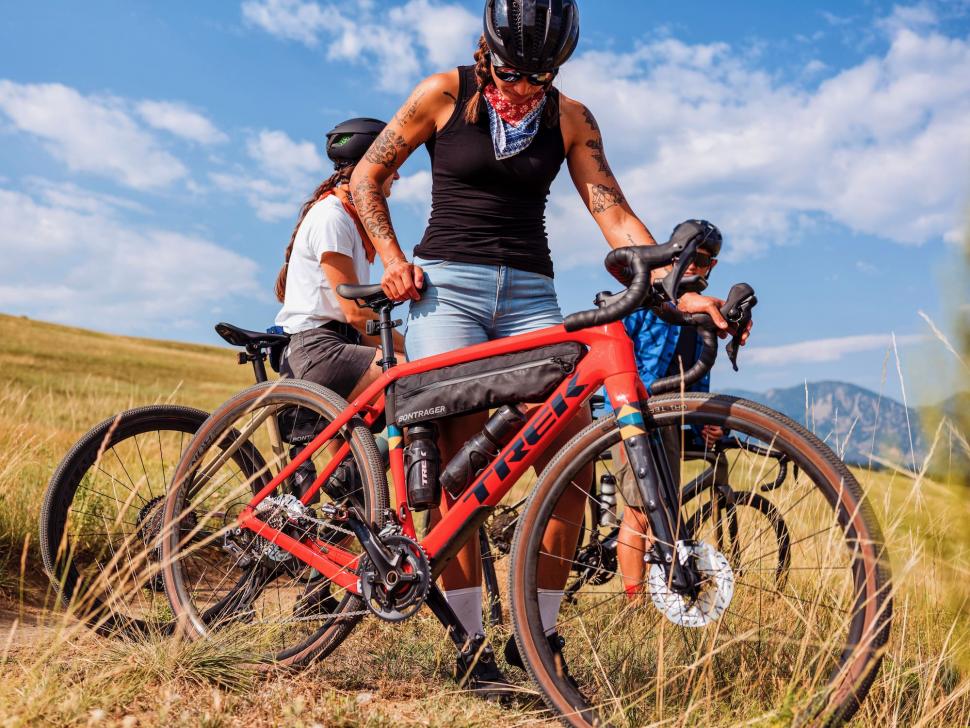
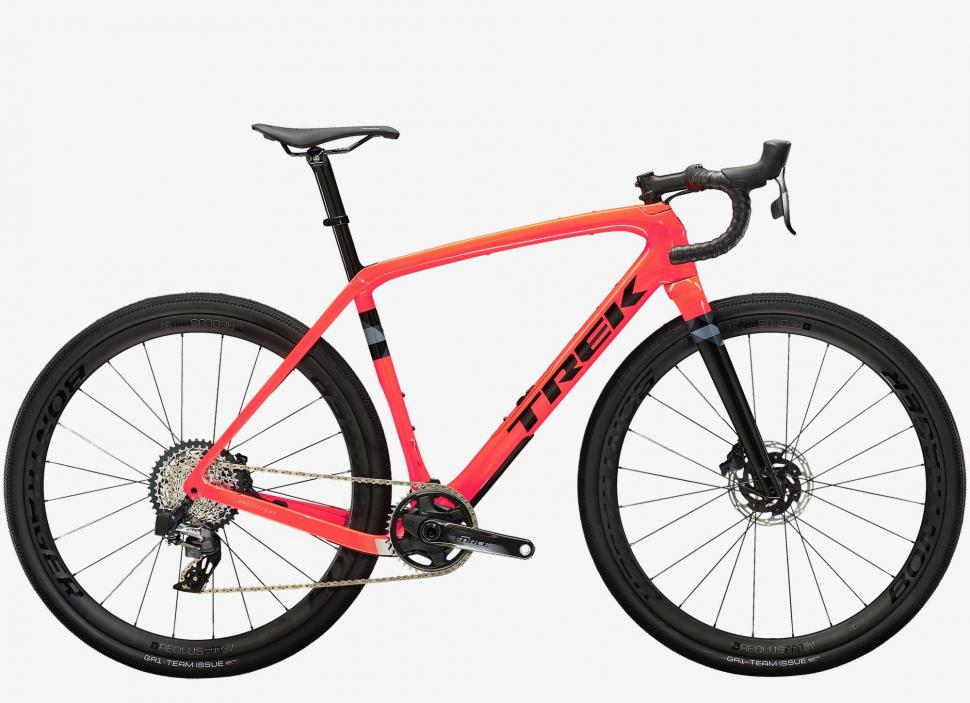
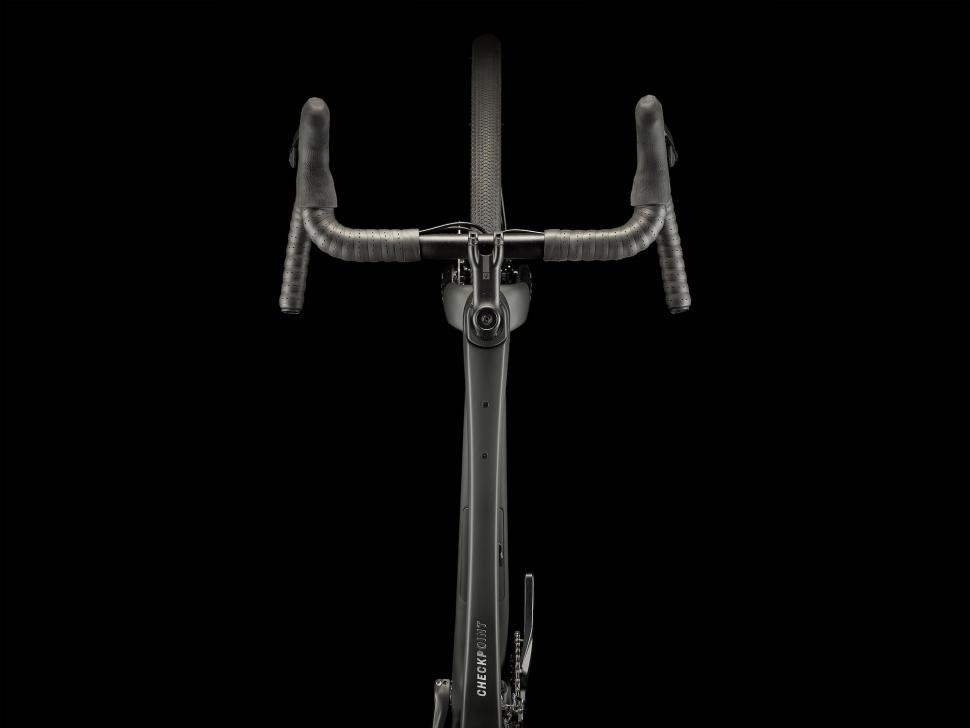
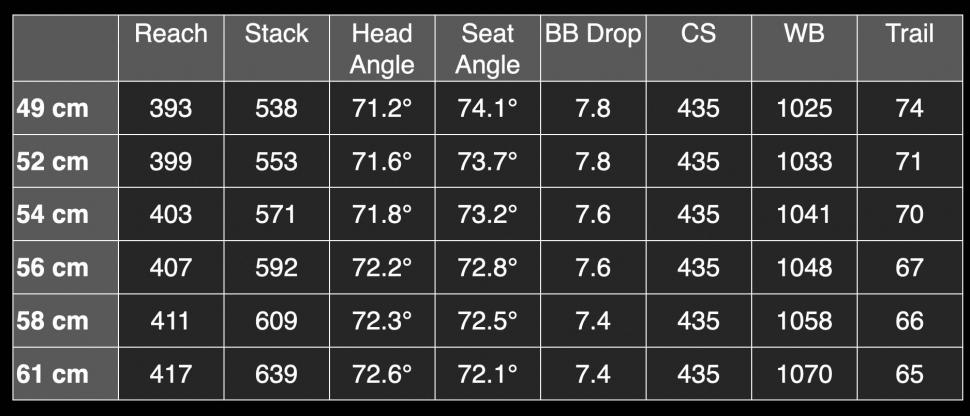
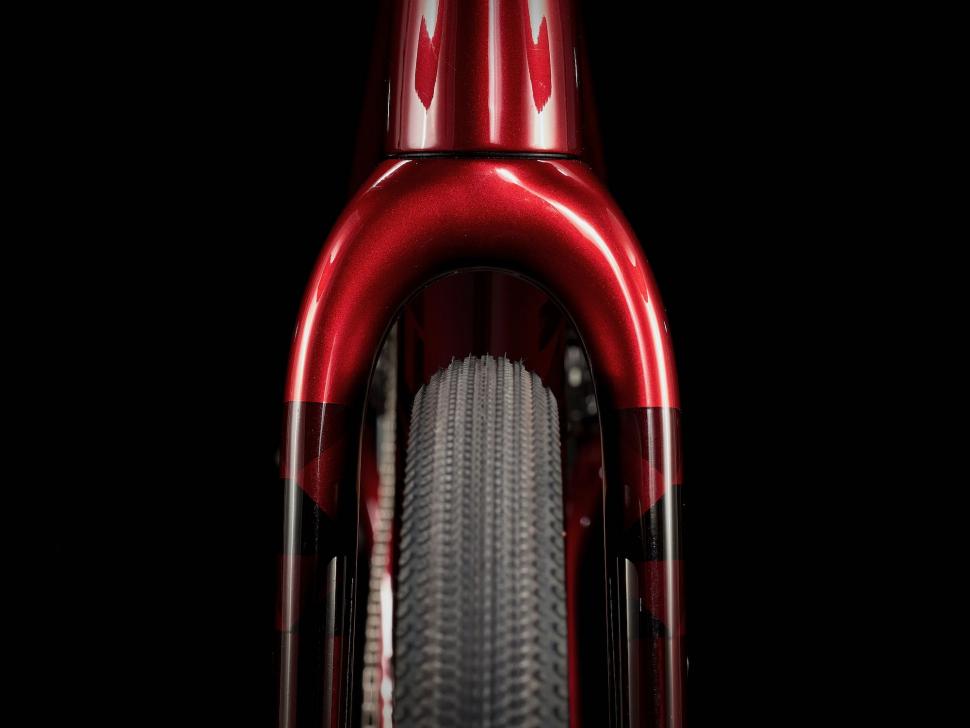
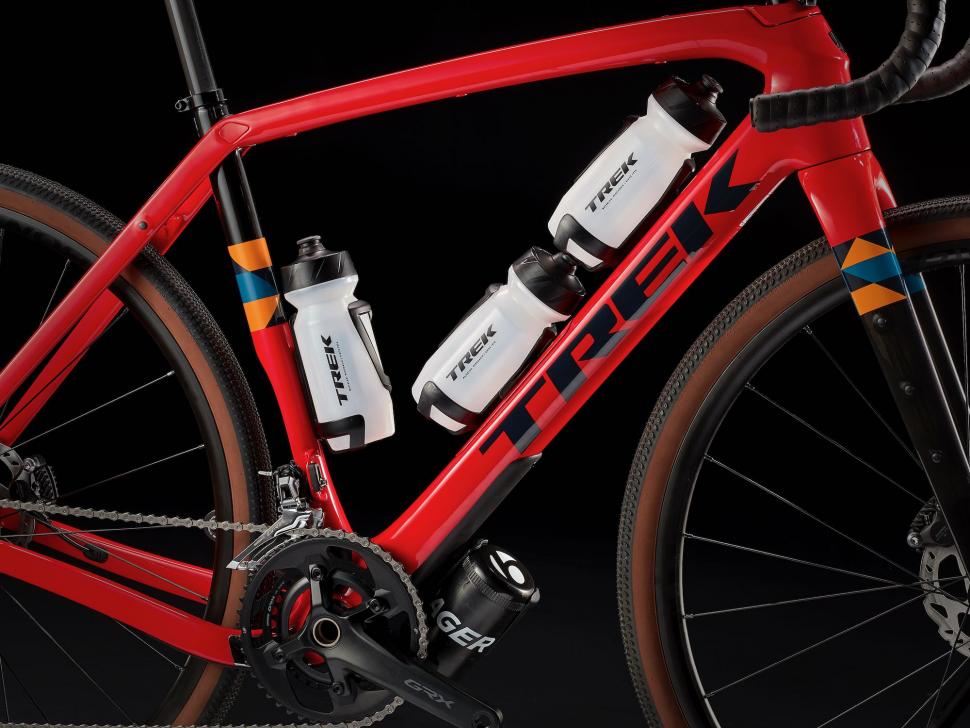

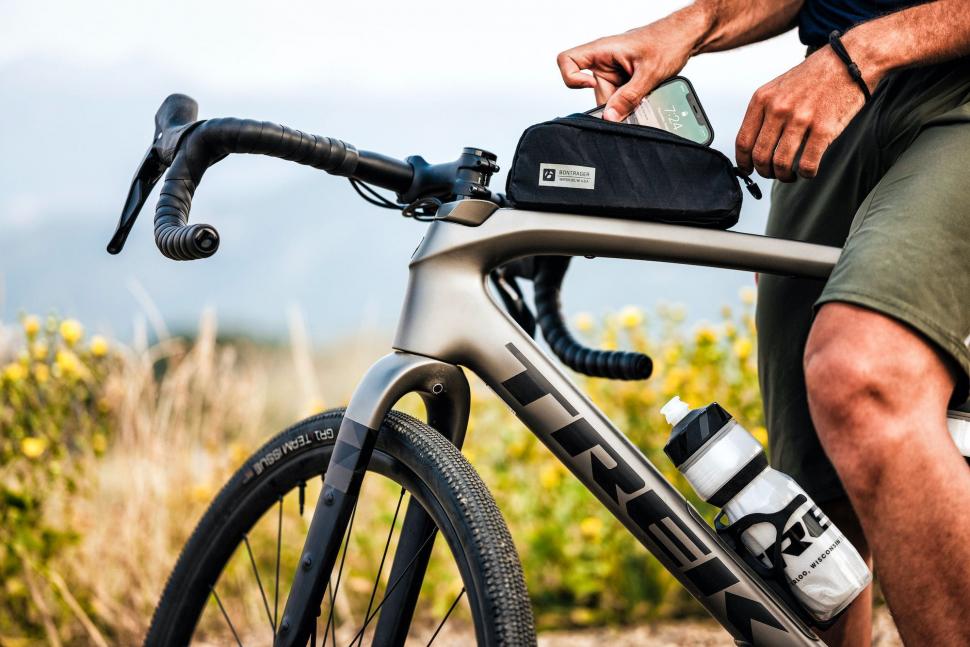

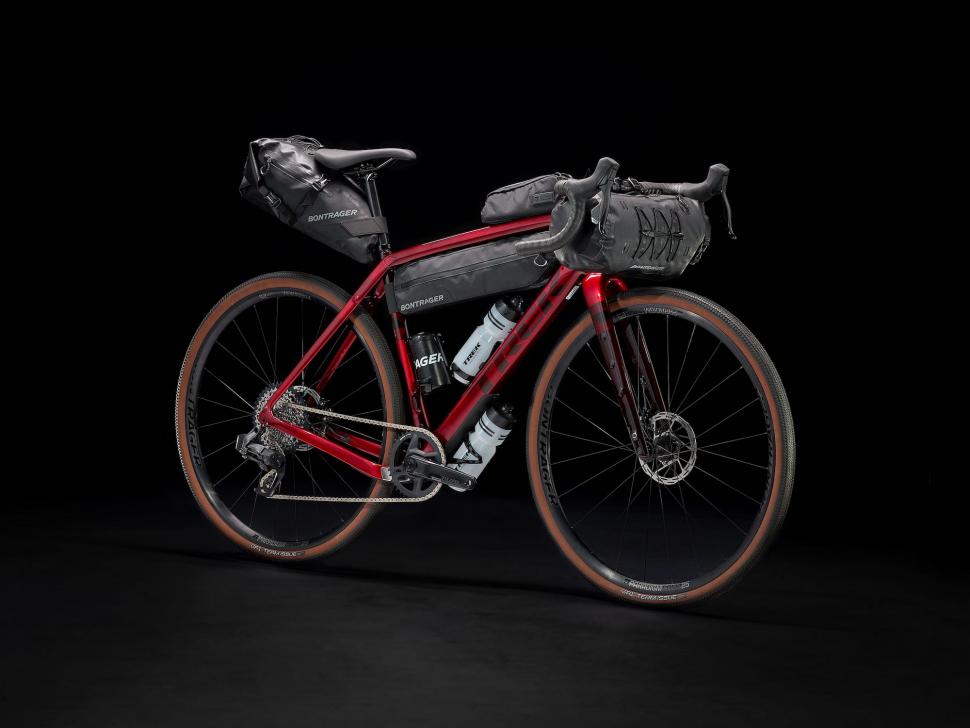
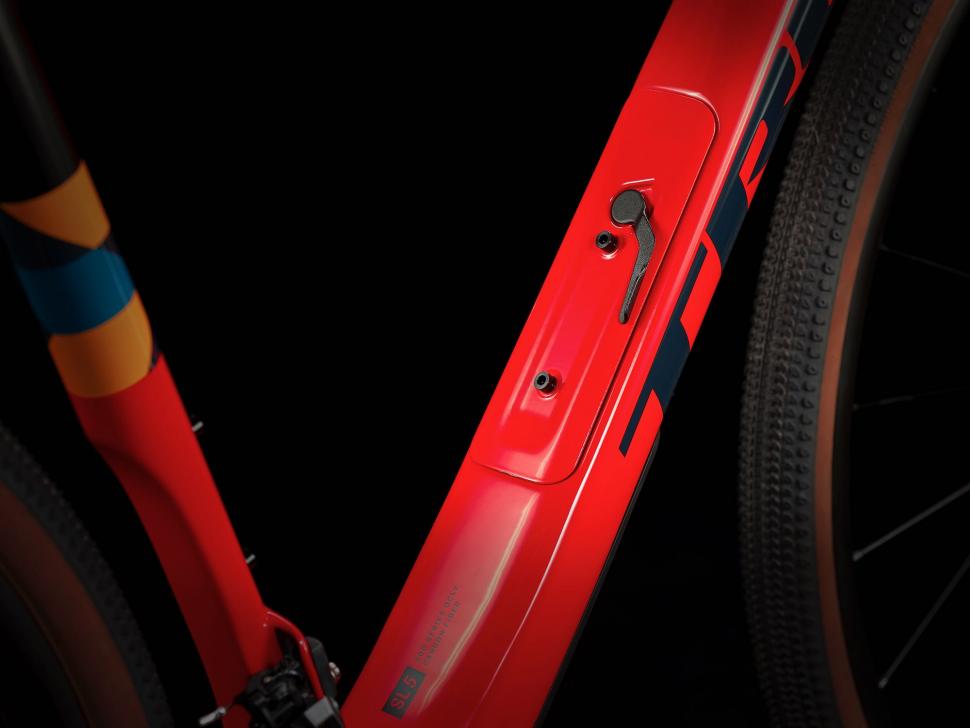
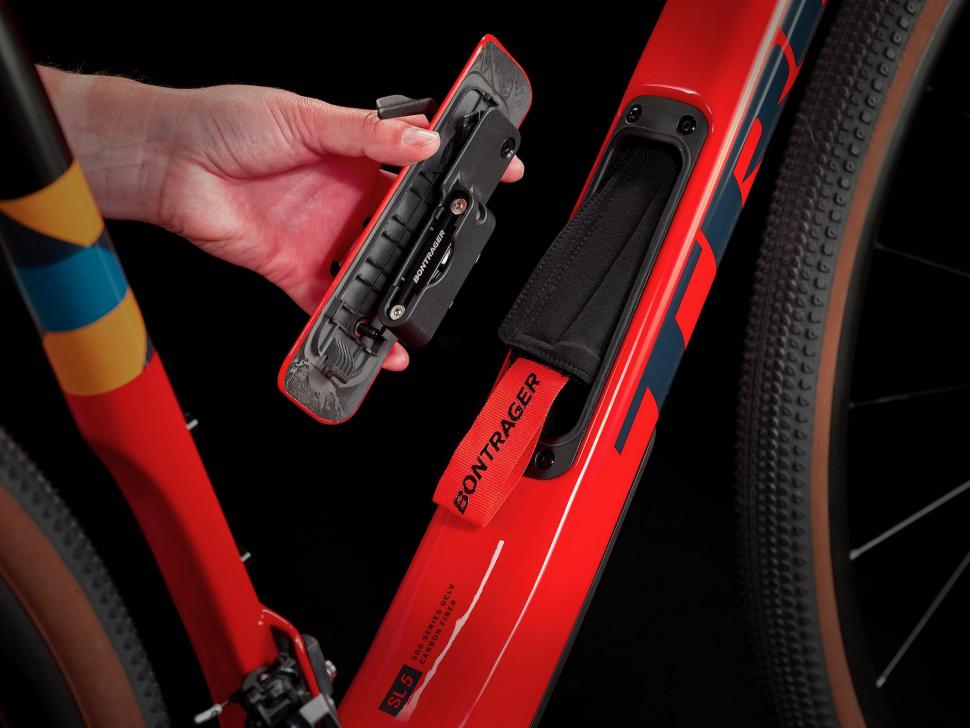
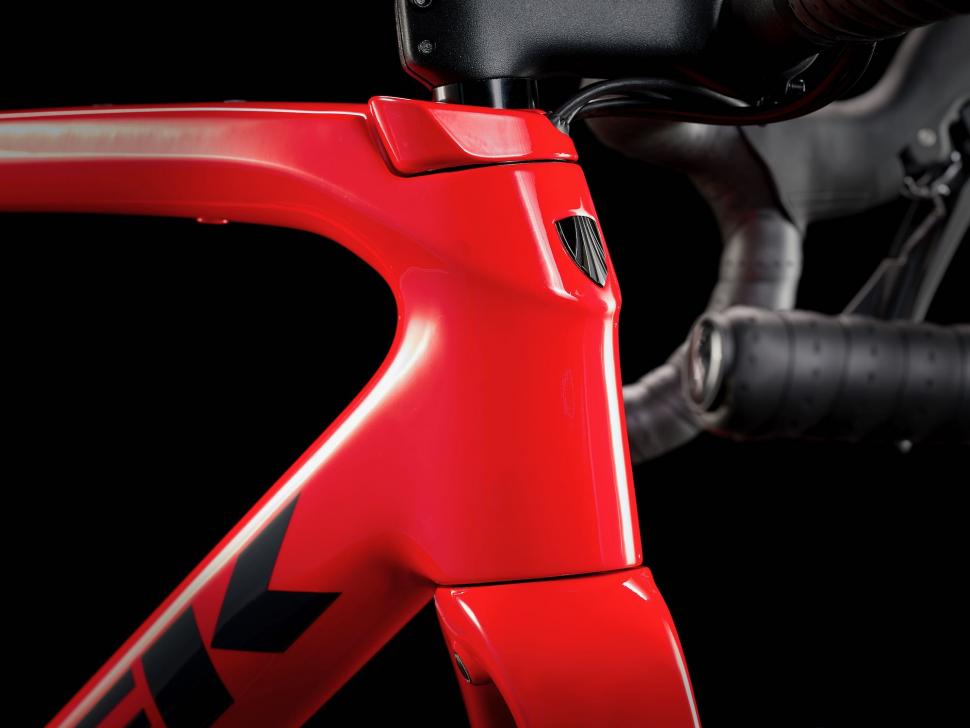
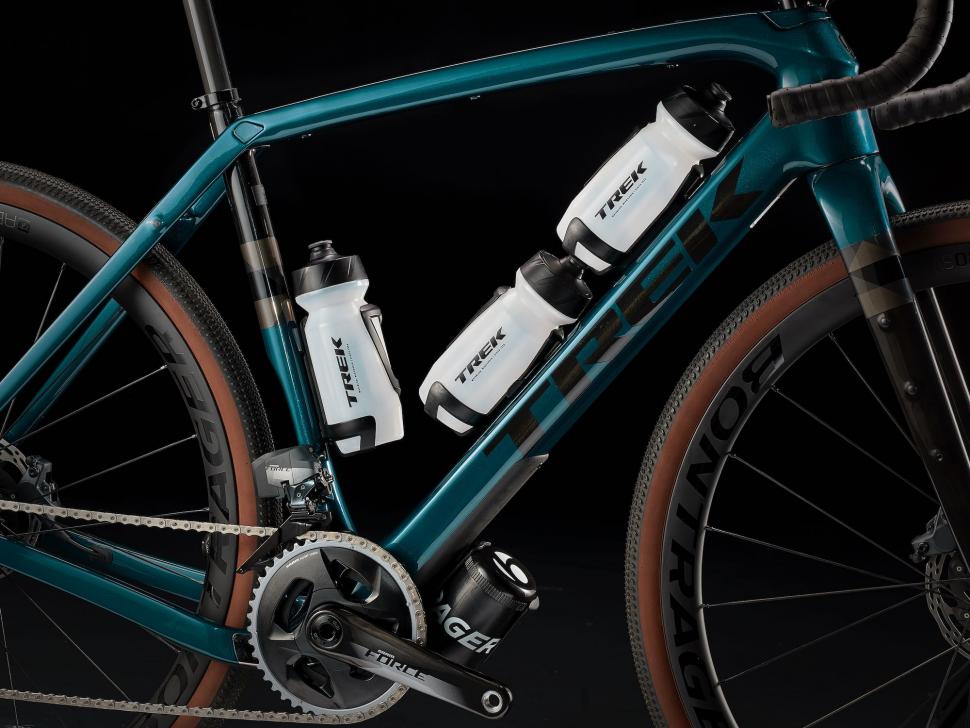

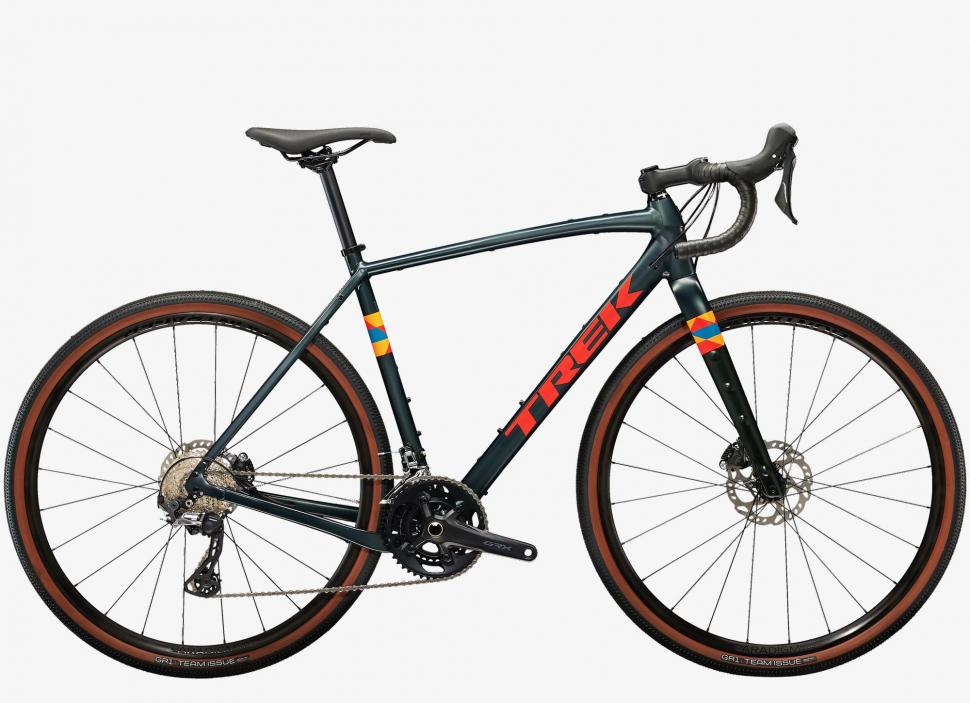
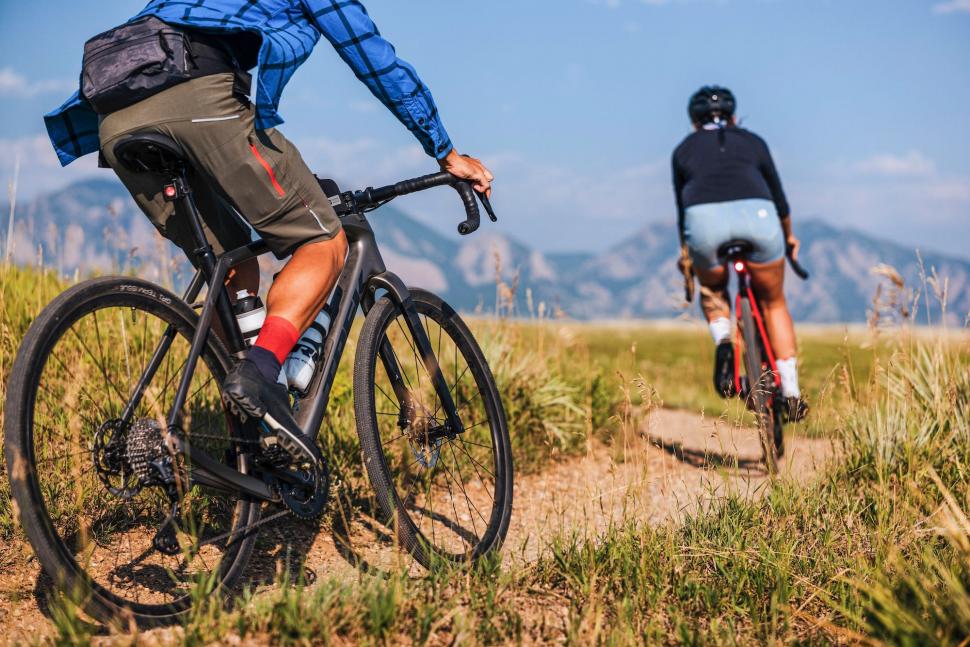
Its not a booby trap as it says clearly right on the side the outcome of cutting it. The same as aerosol paint cans have warnings not to...
A comedian with a purpose can achieve more than the politicians e.g. Zelesky.
Sounds a bit specific though given 90% are bought on some sort of finance.
MORE LANES, MORE LANES!!!!
The numbers don't tell anything like the whole story....
Just squirt some thick grease all over his side windows and door panels. If you're feeling really uncharitable you could throw some sand at the...
check under 'W'for "What cars do to people"
good to see you're testing the farsports wheels - hope to see road.cc continue to expand the range of brands it considers. These or the shallower...
Sadly very normal. And the sand contains loads of evil little shards of flint.
Ah, Clevedon ...